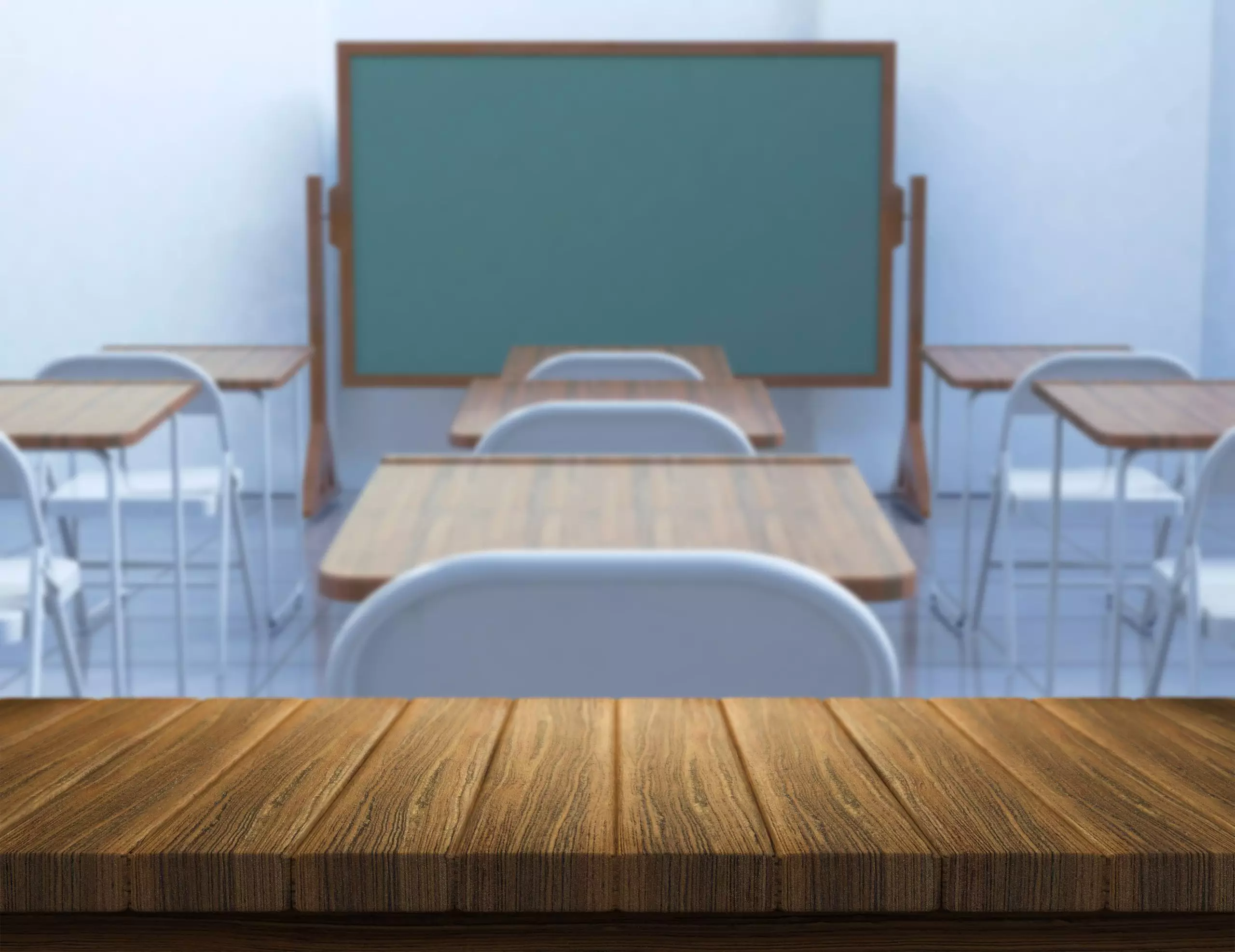School Furniture Manufacturers; industry plays a crucial role in equipping educational institutions with the tables, chairs, desks, and other equipment needed to facilitate effective teaching and learning. With rising enrollment rates and emphasis on upgrading school facilities, there is growing demand for high-quality, durable school furniture that meets the evolving needs of students, teachers, and administrators.
The school furniture market size was valued at over $4 billion globally in 2020. Major factors driving growth include rising investment in educational infrastructure, policies promoting education, and technological advancements enabling interactive and flexible classroom designs. There is also increasing focus on seating ergonomics and accommodation of students with special needs.
As learning environments transition from traditional lecture formats to more hands-on, collaborative models, modular and adjustable furniture is gaining popularity. Simultaneously, schools are looking for furniture that is lightweight, mobile, and easy to maintain. Durability, safety, and cost-efficiency remain key purchasing criteria.
Leading manufacturers are developing innovative solutions such as sit-stand desks, active learning stations, and flexible seating to promote engagement. With the education sector poised for further evolution, school furniture providers play a vital role in turning learning spaces into dynamic, stimulating environments that bring out the best in every student.
## Types of School Furniture
Schools require a wide variety of specialty furniture to support students and teachers in the classroom and throughout campus. Key types of school furniture include:
### Desks
Desks for students and teachers come in a range of styles to fit different grade levels and classroom needs. Some key options include traditional single student desks with an attached chair, adjustable standing desks, collaborative desks that seat 2-4 students, and adjustable desks that can transition from sitting to standing. Desks may have built-in storage space as well.
### Chairs
Task chairs, stools, and other seating must provide ergonomic support for students of all sizes. Chairs sized for elementary students will be smaller than those used by middle or high schoolers.
### Storage
Classrooms require storage solutions like bookshelves, cubbies, cabinetry, and shelving units. Lockers located outside classrooms or in locker bays provide personal student storage.
### Cafeteria
Cafeteria furniture includes lunch tables, stools, benches, and booths sized appropriately for the student body. These are designed to be easy to clean between periods.
### Library
Libraries utilize bookcases, display shelves, study carrels, computer stations, reading tables, lounge seating, and circulation desks.
### STEM/Lab
STEM and lab classrooms need specialized furniture like laboratory tables, adjustable stool seating, demonstration tables, sink cabinets, and teacher demonstration stations. Safety and durability are top priorities.
## Key Considerations
When evaluating school furniture, administrators and school boards need to carefully weigh several key factors:
### Durability
Furniture in high-traffic school environments receives a lot of wear and tear. Desks and chairs should be made from sturdy materials built to withstand daily use by students over many years. Avoid flimsy construction or weak joints that can break easily. Quality school furniture has a long lifespan if properly maintained.
### Cost
Schools operate on tight budgets, so striking the right balance between cost and durability is crucial. Cheaper furniture often equates to lower quality and a shorter lifespan. Spending more upfront for sturdier construction can save money in the long run by avoiding frequent replacement costs. Compare warranties and expected lifespans when calculating true long-term costs.
### Design
Well-designed school furniture considers both form and function. Chairs should provide proper back support and adjustable height options. Desks and work surfaces allow for ample leg room and workspace. Furniture proportions suit growing young bodies. Aesthetically pleasing designs create a more engaging and motivating environment for learning.
### Ergonomics
Proper ergonomics helps avoid musculoskeletal strain and injuries. Chairs with adjustable seats, backrests, and lumbar support promote healthy posture and comfort. Standing desks allow students to alternate between sitting and standing. Proper desk and table height prevents hunching. Smart ergonomic design contributes to student health and wellness.
### Flexibility
Adaptable, flexible furniture enables efficient reconfiguration as needs change. Furniture on casters can easily roll between rooms or layouts. Desks that fold up or nest allow for quick transitions from individual to group work. Flexible furniture supports evolving pedagogies and classroom dynamics.
## Material Options
School furniture is available in a variety of materials, each with their own advantages and disadvantages. Some key options include:
### Wood
Wood, such as oak or maple, is a popular and traditional material for school desks, tables, and chairs. It provides a warm, natural look and can be crafted into sturdy furnishings that hold up well to heavy use. Wood is also easy to refinish and repair as needed. However, it can show scratches and dents over time and requires more maintenance than metal or plastic. Solid wood furniture tends to be more expensive as well.
### Plastic
Plastic or polymer school furniture has become very common in recent years. It is available in many colors and styles and provides a lightweight, stackable option for classrooms. Plastic desks and chairs are easy to clean and disinfect. They are low maintenance since plastic does not rust, peel, or require painting. However, lower-quality plastic furniture can feel flimsy or look cheap. Higher-end plastic that contains polyurethane offers more durability.
### Metal
Metal school furniture often consists of a powder-coated steel frame with plastic, wood, or metal seat and table surfaces. It provides a sturdy yet lightweight option suitable for flexible learning spaces and storage. Metal furniture tends to have a sleek, modern look and comes in many color choices. However, lower quality metal may be prone to dents, scratches, or rust over time. Higher quality steel provides increased durability.
### Upholstery
For soft seating like chairs or sofas, upholstered furniture provides a comfortable and inviting option. Upholstery materials like vinyl, leather, or polyester/cotton blends resist stains and wear well under heavy use. However, upholstery requires more maintenance than hard plastic or metal surfaces.
## Safety Standards
When purchasing school furniture, it’s crucial to ensure that all products meet the latest safety standards. This helps minimize the risk of injuries and accidents in the classroom or campus. There are several key standards and certifications to look for:
– BIFMA – Furniture tested to meet BIFMA (Business + Institutional Furniture Manufacturers Association) standards must pass rigorous tests for structural integrity and durability. BIFMA has established testing protocols for school chairs, desks, and tables.
– UL – The UL (Underwriters Laboratories) Mark indicates that samples of the product have passed UL safety tests. This is important for any electrical components or features.
– CSPC – The Consumer Product Safety Commission has guidelines for mechanical hazards, flammability, lead content, and other safety factors. School furniture should comply with the latest CSPC regulations.
– Greenguard or SCS Indoor Advantage – These certifications indicate that the products meet indoor air quality standards for minimal VOC emissions. This helps create a healthier indoor environment.
– ANSI/BIFMA X5.1 – For office chairs used in school settings, this standard tests stability, durability and structural integrity to support users up to 300 pounds.
– ASTM – Standards from ASTM International cover numerous material performance metrics like strength, colorfastness, toxicity levels and flammability ratings.
Reputable manufacturers will have detailed documentation of safety testing performed on their products. Be sure to review all applicable labels, reports and certificates before making purchasing decisions. Prioritizing safety protects students and minimizes liability risks.
## Sustainability
When purchasing school furniture, it’s important to consider the sustainability and eco-friendliness of the products and manufacturing process. School furniture manufacturers today are increasingly using recycled and environmentally responsible materials in their designs.
Many manufacturers use recycled plastics in desks, chairs, and tables which reduces waste and the environmental impact of production. Some use wood from responsibly managed forests and factories that minimize emissions. Choosing furniture made from recycled and sustainable materials not only limits environmental harm, but teaches students valuable lessons about taking care of our planet.
Besides materials, it’s also important to look at energy use and emissions during manufacturing and distribution. Some manufacturers use renewable energy to power facilities and processes. Others have achieved emissions reductions through improved practices. Engaging suppliers and vendors that actively seek to reduce their environmental footprint is an important part of furnishing schools in a responsible manner.
When researching manufacturers, look for information on their sustainability practices, materials sourcing, certifications, and impact reduction goals. Many leading companies provide transparency into their environmental commitments and progression. Choosing suppliers that share your values around ecological stewardship is the best way to furnish classrooms and offices sustainably. With an abundance of eco-friendly options today, schools can educate students and operate facilities in an environmentally conscious way.
## Customization
One of the key benefits of purchasing furniture from a manufacturer rather than a retailer is the ability to customize pieces to your exact specifications and needs. School furniture manufacturers offer extensive customization options to help educational institutions design a learning environment that is tailored to their students.
### Custom Sizes
Manufacturers can produce furniture in custom sizes and dimensions to perfectly fit the unique layouts and spaces within your school. This includes customizing the height, width, and depth of desks, chairs, tables, bookshelves, cabinets, and other pieces. With custom sizes, you don’t have to settle for standard off-the-shelf options and can get furniture sized correctly for the age and grade levels of your students.
### Custom Designs
Beyond sizing, manufacturers can provide completely custom designs to help your school furniture reflect your brand identity and design aesthetic. You may provide drawings, images, or descriptions of your ideal furniture pieces and have the manufacturer bring your vision to life. Some offer in-house design services to create 3D renderings and CAD models of custom options. This allows for school furniture that aligns with your school’s image and personality.
### Branding Options
School furniture can also be customized with your school’s logo, colors, and branding finishes. Manufacturers may offer engraving, screen printing, edge banding, laminates, and other options to display your school’s name, logo, motto, mascot, or other branded elements on furniture pieces. This allows your school’s unique identity to extend into the furnishings.
## Purchasing Process
The process of purchasing school furniture typically involves several important steps. School districts usually initiate the process by issuing a Request For Proposal (RFP) that specifies their requirements and invites bids from manufacturers.
The RFP provides manufacturers with details like the types of furniture needed, required quantities, budget, delivery timeframe, installation services, and other specifications. Manufacturers will then submit detailed bids outlining their product offerings, pricing, delivery capabilities, and other terms.
School districts evaluate all bids received based on factors like price, product quality and durability, manufacturer reputation, and ability to fulfill the order per the required schedule. Most school furniture purchases require board approval after bid review.
Budget is a major factor during bid evaluation. School furniture is a significant investment, so purchasers aim to maximize value while working within budget constraints set by the district and school boards. Having a clear budget at the outset allows manufacturers to tailor their bids appropriately.
Delivery logistics also play a key role. School furniture deliveries require extensive coordination to avoid disrupting students and faculty. Manufacturers must demonstrate ability to deliver customized orders in full by the start of the school year or other deadline. This often involves phased delivery and installation during summer months.
Overall, the purchasing process allows school districts to find the right furniture manufacturer for their specific needs and requirements through a competitive bidding process. Navigating RFPs, bids, budgets and delivery coordination is essential for both buyers and sellers of school furniture.
## Major School Furniture Manufacturers
When it comes to purchasing quality school furniture, there are several major manufacturers to consider:
### Herman Miller
Herman Miller is an American company that has been producing innovative furniture since the early 1900s. They are known for their ergonomic and environmentally-friendly designs. Herman Miller offers a range of seating, desks, and storage solutions specifically for educational environments. Their school furniture focuses on flexible, multi-use products that promote collaboration and active learning.
### Steelcase
Steelcase is the global leader in office furniture and has a strong presence in the education market as well. They provide an array of seating, desks, tables, and other products aimed at today’s student-centered classrooms. Steelcase partners closely with researchers and educators to understand the evolving needs of students and teachers. They create evidence-based designs to support different teaching and learning styles.
### Virco
Headquartered in California, Virco has specialized in furniture for schools for over 60 years. They manufacture chairs, desks, tables, storage, and other equipment for classrooms and related spaces. Virco is known for delivering excellent value at lower price points than some competitors. They focus heavily on the U.S. education market and have built partnerships with schools across the country. Their product line balances quality, durability, functionality and affordability.
### OFİSTİM Mobilya
OFİSTİM Mobilya is a leading Turkish manufacturer of office and school furniture. They have been crafting innovative furnishings since 1990 and have supplied over 500,000 seats to educational institutions. OFİSTİM offers ergonomic student desks, chairs, teaching stations, bookshelves, cafeteria sets and more. Their in-house design team works closely with customers to create cost-effective, customized solutions adapted to each school’s needs. OFİSTİM combines quality materials, smart designs and reasonable pricing. Their wide selection provides schools the flexibility to outfit any learning environment.
## Conclusion
School furniture is an investment that shapes the learning environment for students and teachers. From durable desks to flexible seating, the furniture selected impacts comfort, health, and engagement in the classroom.
When researching manufacturers, look for companies that offer quality construction from sustainable materials, adhere to the latest safety standards, and provide customization options. Work with sales representatives to design a furniture layout aligned to your school’s pedagogical approach and budget.
Prioritize pieces that will withstand years of use, reduce environmental impact, and create an inspiring space for education. Partnering with an experienced manufacturer like OFİSTİM Mobilya helps ensure you get the right furniture to meet your school’s unique needs.
To learn more about how we can furnish your educational facilities, [contact us](https://www.ofistimmobilya.com.tr/iletisim) today to request a quote. We’re ready to help create effective learning environments that support students’ growth and achievement.









